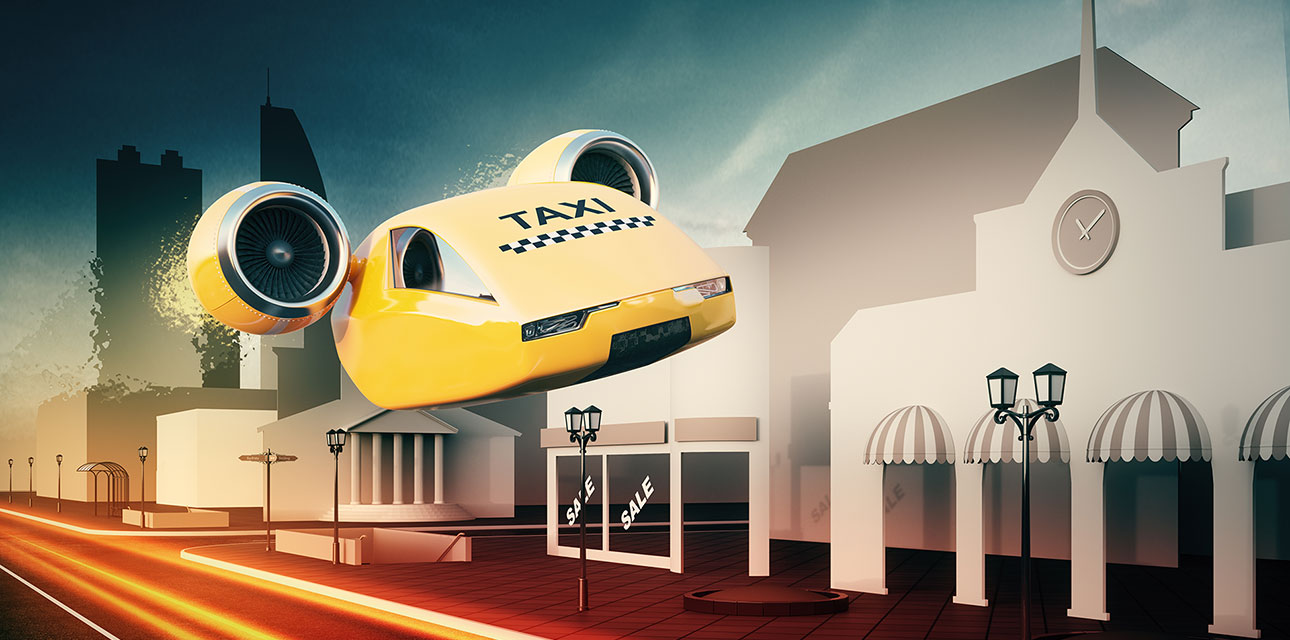Flying taxis in 2 years, smart brain chips in 30 years. Our future’s here
Step inside the mind of the world’ leading futurist. Learn what the world will look like in 2, 10 and 30 years, from a commercial flying taxi service in NZ, to flesh bots that cook you dinner, to an implantable nano computer the size of a grain of sand which controls pain and analyses your nervous system.

From the world’s first flying taxis in two years, to a ‘hyper loop’ that shoots you from Newcastle to Sydney in 10 minutes, these are just two of the things that world leading futurist, Shara Evans says will change the world we live in.
Shara speaks to innovators all around the world on what they are working on and she says our world ‘in 20 years will look like it’s straight out of a science fiction movie’ and everything will be interconnected.
Governments and organisations around the globe are driving innovation and those changes will flow through to industries ranging from retail, to manufacturing, healthcare, government services, agriculture and the list goes on.
Shara Evans spoke at the World Business Forum in Sydney, on how ‘all things seemingly impossible, are becoming a reality’. Here is what you need to know:
Flying taxies
Shara Evans says flying taxis are coming to New Zealand in just two years, with the New Zealand government working with Californian company, Kitty Hawk on the project. That’s right, you read that correctly, in just two years NZ will have a commercial line of self-flying, 100 per cent electric and fully emission free taxis.
According to Kitty Hawk, the air taxi works like a helicopter, it takes off and lands vertically, so it doesn’t need a runway or airport.
But why is the world’s first taxi service going to New Zealand? Well, Kitty Hawk says New Zealand is renowned for its innovation, its high aviation standards and its devotion to clean energy, with its government committing to zero net emissions by 2050.
Hyperloops, space travel and city to city rockets
Futuristic underground transportation systems will soon connect towns, cities and airports. It’s not just Elon Musk who is planning to develop these ‘hyperloops’ or ‘superloops’, but loads of other companies are too. These sealed tube systems could soon be pushing along passenger pods at speeds up to 1,200 kilometres per hour from Newcastle to Sydney, reducing your train trip from 2.5 hours to just 10 minutes.
Non-government agencies are also working on space travel and city to city rockets that can get you from New York to Shanghai in 32 minutes, says Shara.
Artificial intelligence
Artificial Intelligence will catch up with human intelligence by 2050 so humans need to evolve Shara says. Businesses are developing smart contact lenses for your eyes that have nano computers in them. The contact lenses will be able to communicate with devices and other people to share thoughts, ideas and messages.
Implantable computers as small as a grain of sand
University of California (UC) Berkeley have designed a sensor, that’s as small as a grain of sand. It’s called ‘neural dust’ and it’s implantable in the body. It provides real-time data and the technology is being trialled with the US Army. It has the potential to monitor and treat disease in a real-time taking a patient-specific approach. UC Berkeley also says they can help quadriplegics move their prosthetics or even treat epilepsy.
How does it work? The neural dust records electrical activity from the nerve cells in the brain, an ultra-sound is sent to the neutral dust which returns a signal with data about the nerve’s electrical activity. The data is then analysed, reflecting different commands for the prosthetic to move. The university is now working on designing newer and smaller ‘neutral dust’ that can be implanted into the brain and last a lifetime.
The next generation
Shara says the next generation of people will be ‘flesh bots’, robots covered in real flesh which will look and act like humans.
She says this is a big area of growth for the future and these bots will have their own DNA footprint.
Regenerative medicine
We now have regenerative medicine to thank for mouses living 4 to 10 times longer. Shara says this new age technology will soon be used in humans with technology giving us ‘godlike qualities’.
Shara says, ‘it is up to us to take this further’, to take it into our businesses and use it for our decision making to create the future we want to live in.
Published: 29 January 2019
By Jessica Amir

